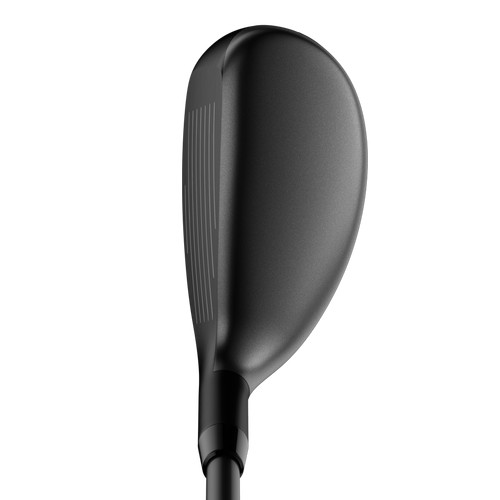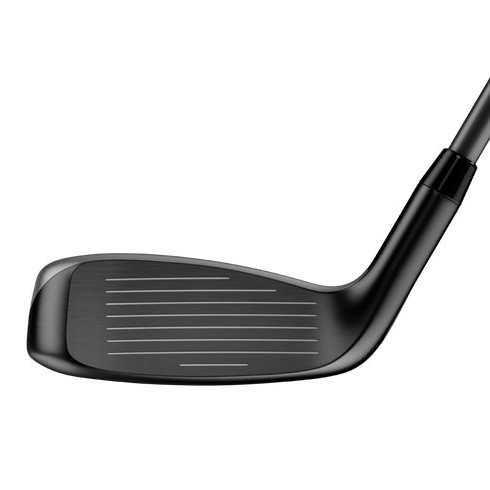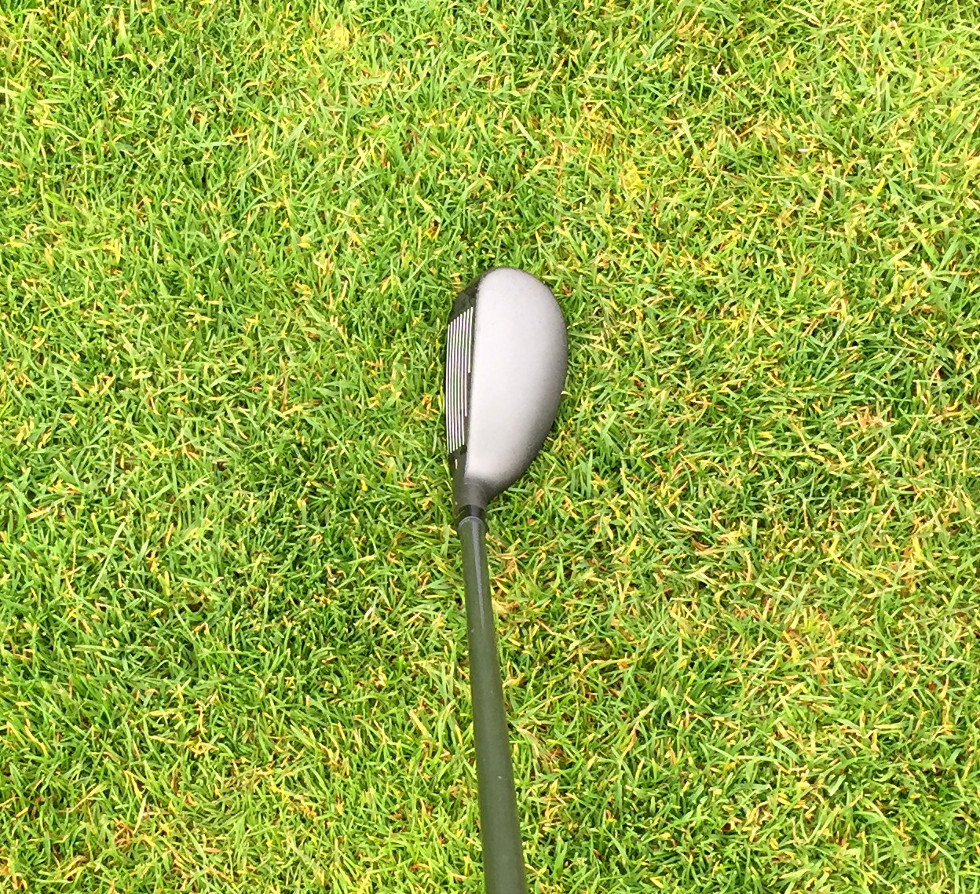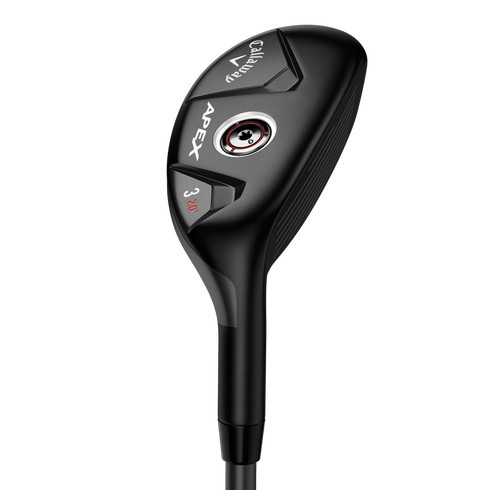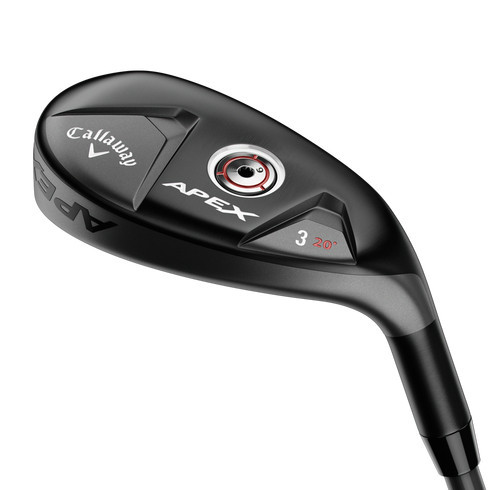 Callaway trumpets the Apex Hybrid as the first hybrid for the Apex and Apex Pro player, meaning folks that use the company’s top line of irons (XR Pro players probably would count, too). However, that line ranges from “game improvement” with the Apex CF 16 to the “you-better-be-darn-good” Apex Muscleback, that’s a fairly wide range, and a tall order to fit that span of abilities with a single club.
Callaway trumpets the Apex Hybrid as the first hybrid for the Apex and Apex Pro player, meaning folks that use the company’s top line of irons (XR Pro players probably would count, too). However, that line ranges from “game improvement” with the Apex CF 16 to the “you-better-be-darn-good” Apex Muscleback, that’s a fairly wide range, and a tall order to fit that span of abilities with a single club.
Such a club would need to be reasonably easy to hit straight, and yet still be workable. It should get the ball airborne easily and let the player to control the trajectory when needed.
Does the Callaway Apex Hybrid deliver? Let’s find out.
Esthetics
The Apex hybrids are smaller than most, and unlike many available today, you definitely won’t confuse these for a fairway wood. The hybrids blend well with irons, with a longer iron-like blade length. The Apex sits low to the ground, and unlike with some hybrids, these don’t make you feel like you’re addressing the ball with a completely different animal from your irons.
Like an iron, the toe of the hybrid is a good bit taller than the heel, more noticeably so than you see on many other hybrids. This adds to a feeling of confidence at address and helps ease the transition into the iron set.
The understated, matte charcoal club head frames a golf ball well (it’s darker than it appears in this photo). There’s visible Apex branding on the back of the club toward the toe. This is carried off well with a matte black on matte charcoal treatment that is visible enough that players who like that sort of thing will be satisfied, but also subdued enough that those who like a more traditional look in their clubs will still not be greatly bothered by it. Honestly, I was midway through a round with the hybrid before I even noticed it was there.
Technology and Design
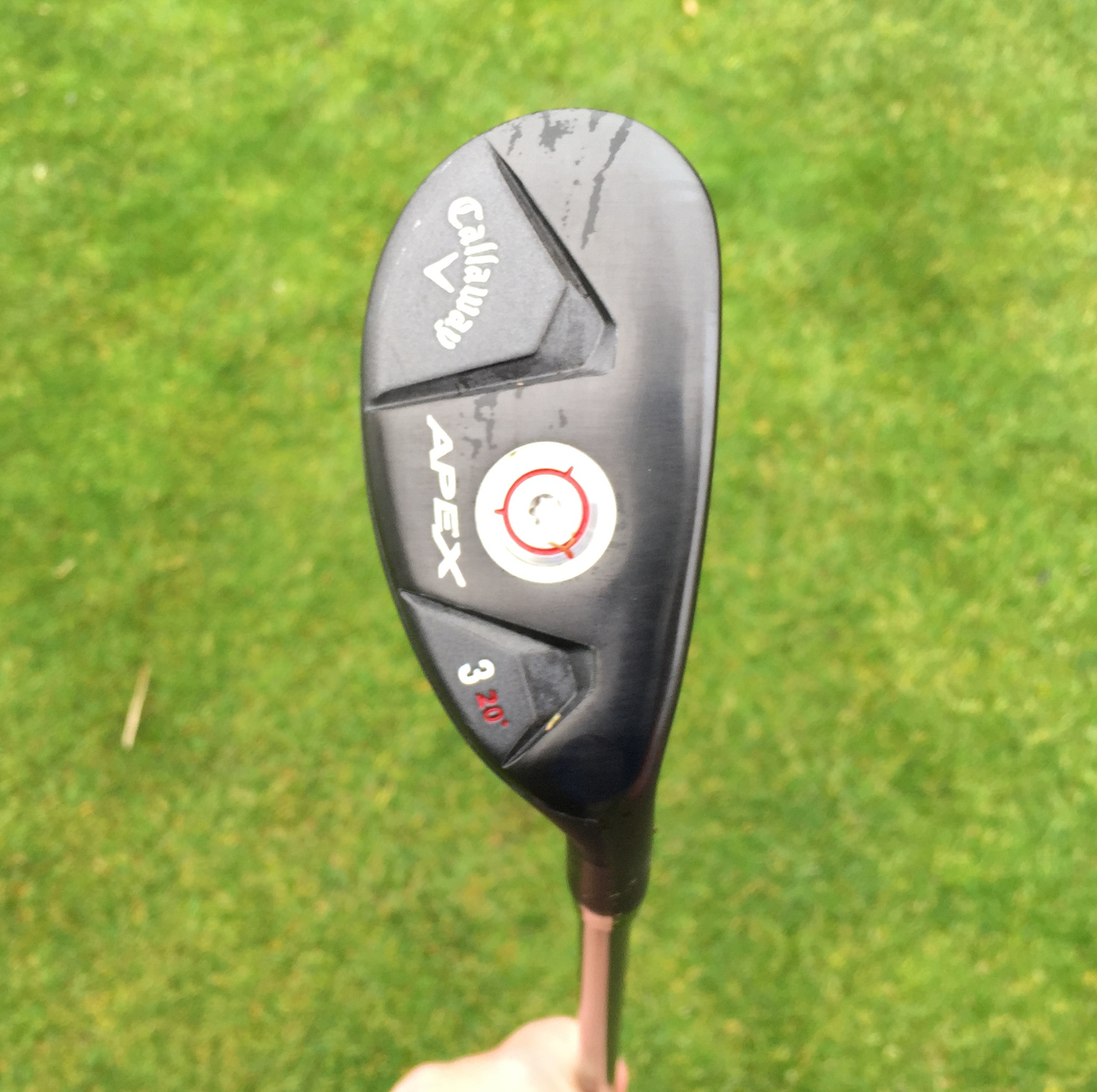 In keeping with a theme – making the Apex Hybrid play more like an iron – Callaway has given it a neutral center of gravity (CG). (Typically, hybrids have a low CG to launch the ball high.) This CG placement is intended to give the Apex more iron-like workability and trajectory control.
In keeping with a theme – making the Apex Hybrid play more like an iron – Callaway has given it a neutral center of gravity (CG). (Typically, hybrids have a low CG to launch the ball high.) This CG placement is intended to give the Apex more iron-like workability and trajectory control.
But Callaway hasn’t forgotten that the purpose of a hybrid is to provide an easier-to-play option to long irons. Callaway’s Forged Face Cup of 455 Carpenter Steel is designed to increase ball speed across the face. And the Internal Standing Wave adds forgiveness by allowing weight to be positioned more precisely to deliver the playing characteristics sought by better players.
Performance
Callaway was shooting for a hybrid that is maneuverable but forgiving. Many players want the ease of play that a hybrid offers compared to long irons and the trajectory and ball-flight control that “players” irons offer. That’s a tall order because the very characteristics that make hybrids easy to hit, tend to make them less maneuverable and locked into a high-launch, high-ball flight plays.
The Apex Hybrid is quite well suited to pulling off this oxymoronic goal. On the course (when I’m swinging and striking well), my stock shot with my irons is a mid ball flight with an easy draw. With the Apex, my stock shot is mid ball flight with an easy draw.
My long irons are actually reasonably forgiving (as forged, maneuverable irons go). But if my swing is off or I miss contact by not all that much, I’m going to lose distance or miss my line (or both).
With the Apex Hybrid, I can get away with a lot more. Distance, in particular, is very consistent with decent contact, much more so than my previous hybrid. Shot dispersion is always going to be a larger spread the farther you’re hitting it. Comparing my older hybrid (also designed for better players) with the Apex, the dispersion goes from a circle (wider range of distances) to a horizontal oval (more consistent distances).
That alone is tremendous plus in any club, but the Apex does a lot more.
My home course is tree lined, and when my drives are less than stellar (a common occurrence) I often find myself needing to bend a shot one way or the other, or hit a high or low shot on command to extricate my ball from behind trees and get back into the hole. Again, the Apex does a great job of this.
The technology in many hybrids is actually counter-productive in a punch-out situation, when you need to keep the ball below tree limbs but still need to get to the green or at least well up the fairway. Low CG can make the ball jump up off the club face and right into the very limbs you’re trying to avoid.
The neutral CG of the Apex means that when you make a punch swing, you get a punch shot. At the same time, if you need to hit one high off a tight fairway lie, the Apex is equally agreeable to doing that. It won’t hit as high as some hybrids in this situation, but it does so quite satisfactorily.
The CG placement also allows better players to curve the ball either way. I struggle to hit fades on demand, but I find them easier to play with Apex when I need that shot.
Typically, hybrids launch high and go straight (almost no matter what). They are fantastic clubs for the majority of golfers out there who struggle to get distance with their long irons. I’m emphasizing the iron-like playing characteristics of the Apex, because those are harder to find in hybrids today. But you should not read that as “hard to hit.”
There are a lot of “players” hybrids that will let more skilled players maneuver around a course, but they are often prone to severely punishing poor contact.
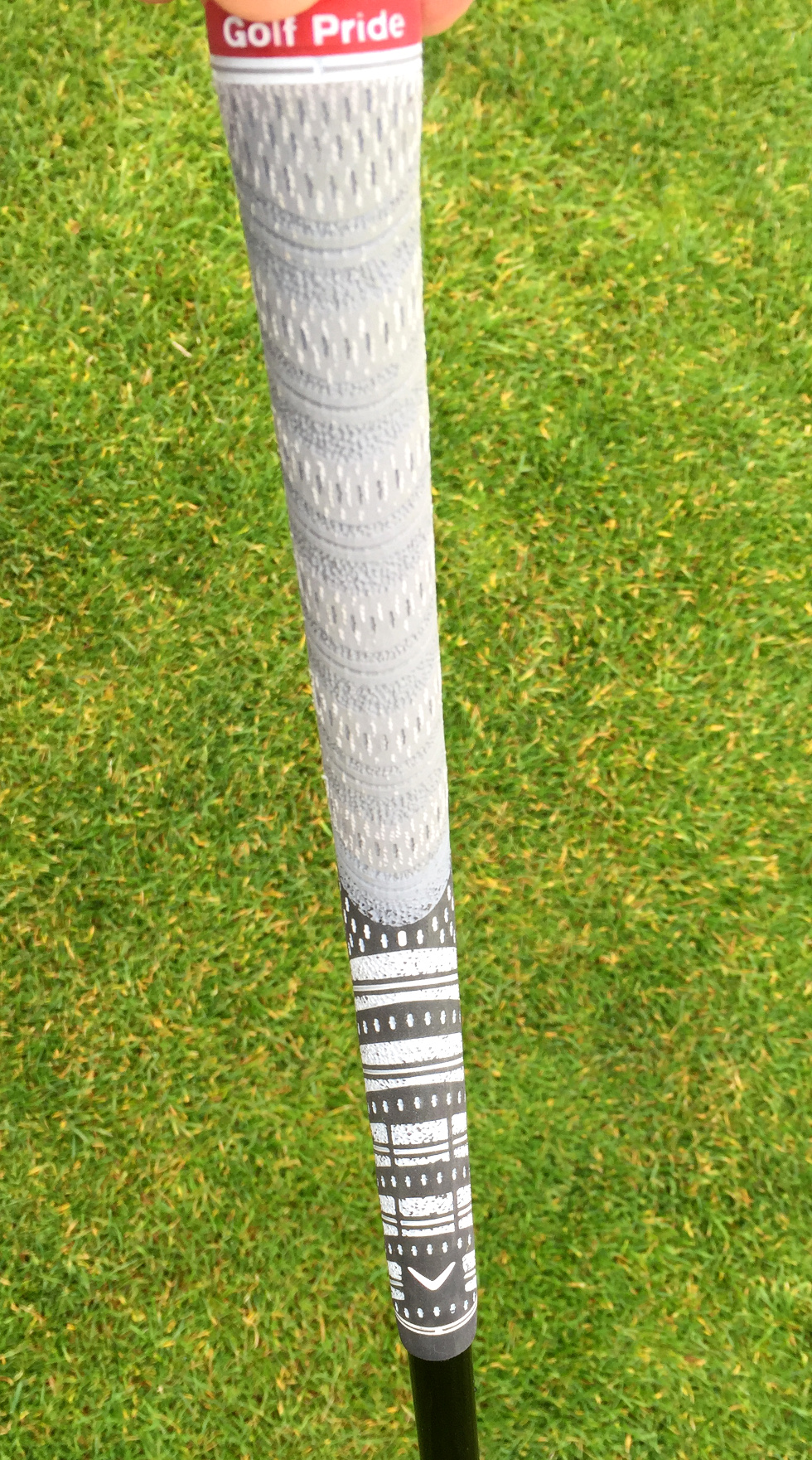 Callaway has managed to make the Apex playable for a much wider range of players. While it is welcome to bending shots when necessary, like a forged iron; it is also perfectly happy playing the role of a hybrid. Hitting a low stress, high flying shot into a green from the fairway or light rough is, well, pretty low stress. Anything approaching good contact tends to deliver good results. As stated earlier, the Apex will let you get away with a lot more than your long irons are going put up with.
Callaway has managed to make the Apex playable for a much wider range of players. While it is welcome to bending shots when necessary, like a forged iron; it is also perfectly happy playing the role of a hybrid. Hitting a low stress, high flying shot into a green from the fairway or light rough is, well, pretty low stress. Anything approaching good contact tends to deliver good results. As stated earlier, the Apex will let you get away with a lot more than your long irons are going put up with.
Specifications
For this review, I played the 20° Apex Hybrid with the stock Mitsubishi Kuro Kage Black Hybrid shaft (S). Callaway provides a stock multi-compound grip (Golf Pride New Decade) on the Apex.
The Apex comes in four lofts roughly corresponding to the iron that they replace (though if you’re like me, the 2 or 3 might replace a 5-wood in your lineup).
Club Loft Lie Length SwingWeight ---- ---- --- ------ ----------- 2H 18° 57.50° 40.50" D3 3H 20° 58.00° 40.00" D3 4H 23° 58.50° 39.50" D3 5H 26° 59.00° 39.00" D3
The Kuro Kage Black Hybrid shaft is a mid torque, mid launch shaft. It is offered in Light (66 g.), Regular (69 g.) and Stiff (82 g.). Surprisingly, there is no X-Stiff stock option, but custom shafts are available.
Conclusion
More consistent distance and turning that shot dispersion circle into a horizontal oval would be enough to boot my old hybrid and put the Apex in my bag. But the fact that is still fairly forgiving of mishits while allowing you to make the shot that you need makes it a no brainer for me.
The only thing the Apex doesn’t seem to do well is let the player adjust the club to fit their swing. There’s no adjustable hosel like in the other higher end Callaway hybrids and woods. While the weight in the sole of the club is removable, that won’t do much to address a fade or draw swing. One lighter than the standard 6 gram weight should raise the CG, but lower the head and swing weights. A heavier one would have the opposite effects. While that’s a measure of adjustability, it’s not standard and it’s not what we’ve come to expect in higher end clubs.
Adjustability is mainly a matter tweaking a club to fit your swing and tendencies, rather than vice versa. The Apex happens to be a pretty good fit for me, and I believe it has enough forgiveness and playability to fit a lot of golfers who have generally good swings but who don’t always make perfect contact.
While there might be a better candidate out there for players who only want their hybrid to launch high and fly straight, the Apex is a very strong candidate for those players who sometimes need to shape shots with their hybrids. Still, the Apex is remarkably easy to play from most lies for a smaller headed hybrid. If working the ball and controlling trajectory is important to you in a hybrid, make sure you try the Apex early in your search. You just might save yourself some time.
